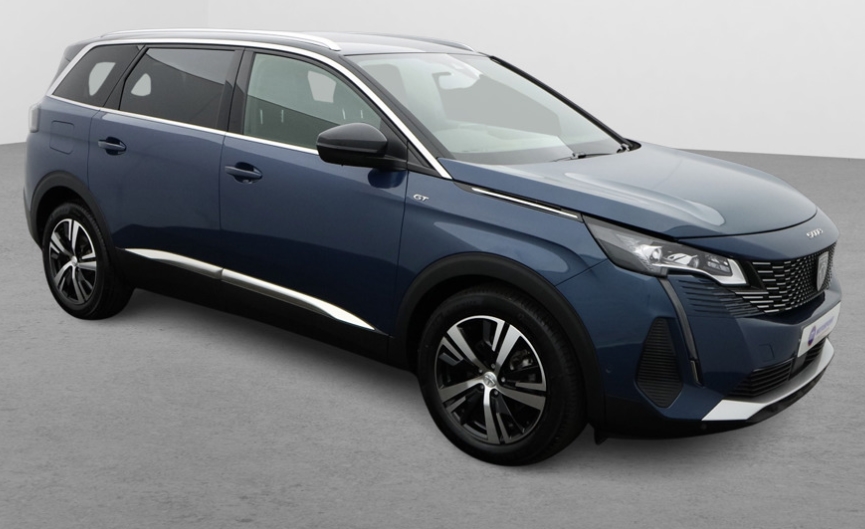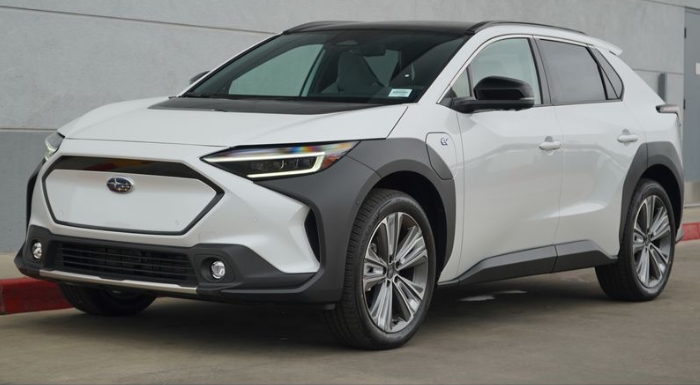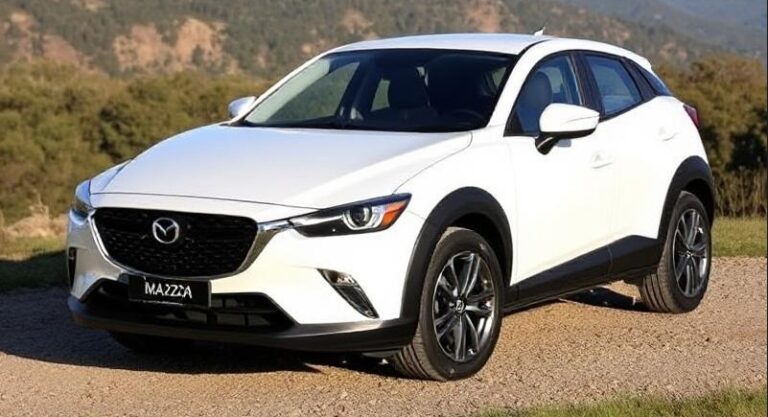The Evolution of The Peugeot 5008
Of all the transformations in the modern automotive landscape, few are as definitive and successful as that of the Peugeot 5008. In the space of a single generation, it morphed from a competent, family-focused but stylistically conservative Multi-Purpose Vehicle (MPV) into a bold, desirable, and critically acclaimed Sport Utility Vehicle (SUV). This is not merely a story of a model update; it is a tale of strategic reinvention, reflecting a seismic shift in consumer tastes and Peugeot’s own ambitious brand repositioning. To trace the evolution of the 5008 is to understand the changing face of the family car itself.
The First Generation (2009-2016): The Age of the MPV
Genesis and Purpose
Launched at the Frankfurt Motor Show in 2009, the first-generation Peugeot 5008 was the brand’s direct answer to the dominance of models like the Renault Scénic, Citroën C4 Picasso, and Ford S-MAX. The MPV, or “monospace” as it was known in France, was the undisputed king of family transport. Practicality, space, and versatility were the currencies of this segment, and Peugeot engineered the 5008 to excel in these areas.
Built on the PSA PF2 platform, which it shared with the first-generation Peugeot 3008 (a more crossover-styled vehicle) and the Citroën C4 Picasso, the 5008 was designed from the inside out. Its primary mission was to move a family of up to seven and their luggage in comfort.
Design and Interior
The exterior styling was a product of its time and segment: a smooth, one-box silhouette designed to maximise interior volume. While handsome in a reserved way, with a large glasshouse and a gently sloping bonnet, it lacked the visual drama that would later define its successor. It was a tool for a job, and it was shaped accordingly.
The real story of the first-generation 5008 was its interior. It was a masterclass in modularity. The car was offered as a seven-seater as standard in most markets. The second row consisted of three individual, full-size seats that could each slide, recline, and fold flat independently. The two third-row seats were proper pop-up units that could also fold completely flat into the boot floor, creating a cavernous, van-like loading bay. With all rear seats folded, it offered a staggering 2,506 litres of space.
Peugeot also injected a dose of premium technology, uncommon for the segment at the time. A large panoramic glass roof bathed the cabin in light, while a futuristic, flip-up Head-Up Display (HUD) projected speed and cruise control information onto a polycarbonate screen in the driver’s line of sight. The driving position was commanding, with a high-set gear lever and an angled centre console that cocooned the driver, borrowing a cockpit-like feel from the 3008.
Engines and Trim Levels
The engine lineup focused on efficiency and reliability. The petrol offerings were centered around the 1.6-litre “Prince” engine, co-developed with BMW, available in naturally aspirated VTi (120 hp) and turbocharged THP (156 hp) forms. However, the diesel HDi engines were the most popular choice. These included a frugal 1.6-litre HDi (110-115 hp) and a powerful, refined 2.0-litre HDi (150-163 hp). Gearbox options ranged from 5- and 6-speed manuals to a 6-speed automatic and Peugeot’s less-loved EGC (Electronic Gearbox Control) automated manual.
The trim level structure followed a logical progression:
Access: The entry-level model, featuring the basics like air conditioning, electric front windows, and a full suite of safety features.
Active: The volume seller, adding crucial equipment like 17-inch alloy wheels, rear parking sensors, cruise control, automatic lights and wipers, and dual-zone climate control.
Allure: The top-tier trim, which included the desirable panoramic sunroof, the Head-Up Display, reversing camera, satellite navigation, and tinted rear windows.
Family/Exclusive: In some markets and for certain model years, special editions or higher-spec versions were offered, bundling together luxury and family-friendly features.
The 2013 Facelift
In late 2013, the 5008 received a significant mid-life facelift. This brought its styling in line with Peugeot’s new design language, most notably adopting the “floating” front grille and more expressive, modern headlights seen on the 208 and 308. The changes were subtle but effective, giving the MPV a more contemporary and premium appearance for the final years of its production run.
The Second Generation (2017-Present): The SUV Revolution
A Market in Motion
By the mid-2010s, the automotive world had changed. The MPV market was in steep decline, supplanted by the meteoric rise of the SUV. Families no longer wanted a purely practical vehicle; they desired style, a commanding road presence, and the rugged image associated with SUVs. Peugeot, under the leadership of CEO Carlos Tavares, embarked on an ambitious plan to move the brand upmarket, and the reinvention of the 3008 and 5008 was central to this strategy.
Unveiled at the 2016 Paris Motor Show and launched in 2017, the second-generation 5008 was a complete and total departure. It was no longer an MPV. It was now a long-wheelbase, seven-seat SUV.
Exterior Design: A New Assertiveness
Built on the new, lighter, and more efficient EMP2 platform, the new 5008 was a visual masterpiece. It shared its front-end design and cabin with the wildly successful, smaller 3008. The design was confident and aggressive, featuring a long, flat bonnet, a vertical chrome-studded grille, sharp LED headlights, and a muscular stance. From the B-pillar back, its longer wheelbase and more upright roofline distinguished it, providing the space required for a third row. The rear was finished with Peugeot’s signature three-claw LED tail lights, housed within a gloss black panel that spanned the width of the car. It had traded humble practicality for undeniable desirability.
Interior: The i-Cockpit® and Retained Versatility
If the exterior was a revolution, the interior was an epiphany. The second-generation 5008 introduced the world to the Peugeot i-Cockpit® in a large family vehicle. This philosophy centred on three elements: a compact, low-slung steering wheel, a high-set 12.3-inch configurable digital instrument panel viewed over the wheel, and an 8-inch central touchscreen for infotainment. A row of elegant “piano key” toggle switches provided satisfying shortcuts to key functions. The materials, fit, and finish were a quantum leap over the previous generation, rivalling premium brands.
Crucially, however, Peugeot did not abandon the practicality that defined the original. The new 5008 brilliantly combined its SUV style with the cleverness of an MPV. It retained the three individual, sliding, and folding seats in the second row, ensuring class-leading space and flexibility for three passengers. The two third-row seats were not only foldable but also fully removable (weighing just 11kg each), allowing users to maximize boot space when needed. It was the ultimate “have your cake and eat it too” family car.
Engines and Trim Levels
The powertrains were updated to the latest generation of PureTech petrol and BlueHDi diesel engines, focusing on downsizing and turbocharging for a better blend of performance and economy.
Petrol: The range was headlined by the multi-award-winning 1.2-litre PureTech 3-cylinder turbo (130 hp) and the 1.6-litre PureTech 4-cylinder turbo (165 hp, later 180 hp).
Diesel: Options included the ultra-efficient 1.6-litre BlueHDi (120 hp), which was later replaced by the new 1.5-litre BlueHDi (130 hp), and the powerful 2.0-litre BlueHDi (150 hp or 180 hp). The smooth EAT6 and later EAT8 automatic gearboxes became increasingly popular.
The trim structure was also revised to reflect the car’s more premium positioning:
Active: A well-equipped entry point with the i-Cockpit, dual-zone climate control, rear parking sensors, and advanced safety features.
Allure: Added 18-inch alloys, front and rear parking sensors, a reversing camera, satellite navigation, and part-leather-effect upholstery.
GT Line: A sport-styled trim that added a checkered grille, full LED headlights, GT Line styling details, and enhanced interior trim without requiring the most powerful engine.
GT: The pinnacle of the range, available exclusively with the most powerful diesel (and later petrol) engine. It featured 19-inch alloys, Alcantara and leather upholstery, adaptive cruise control, and a panoramic sunroof as standard.
The 2020 Facelift
In late 2020, the 5008 received a facelift in line with the updated 3008. The key change was at the front, which adopted Peugeot’s stunning new frameless grille that seamlessly blended into the revised headlights. New “sabre-tooth” daytime running lights descended into the bumper, giving it an even more aggressive look. Inside, the central touchscreen was upgraded to a larger 10-inch unit, and the digital i-Cockpit display received improved graphics and contrast.
The Third Generation (2024 onwards): The Electric Future
The story of the 5008’s evolution continues with the announcement of the third-generation model in 2024. Reflecting the next great automotive shift—electrification—the all-new 5008 is built on Stellantis’s state-of-the-art STLA Medium platform. The headline model is the all-electric E-5008, which promises a substantial range and is available in single-motor front-wheel drive and dual-motor all-wheel-drive configurations. Mild-hybrid and plug-in hybrid powertrains will also feature, catering to a wider audience during the transition period.
Visually, it represents another leap forward, adopting an even more angular, fastback-SUV aesthetic. The interior is dominated by the new 21-inch curved “Panoramic i-Cockpit,” which combines the driver’s display and central touchscreen into one sweeping, floating panel. While pushing the boundaries of technology and design, Peugeot has confirmed it will retain the seven-seat layout and exceptional modularity that have become the 5008’s trademark.
.
NO MORE dead batteries with this:

.
Conclusion
The Peugeot 5008’s journey is a microcosm of the automotive industry’s evolution over 15 years. It began life as a supremely logical and practical MPV, a vehicle that perfectly met the needs of the time. But as desires shifted from pure function to form and image, Peugeot demonstrated remarkable foresight and design flair. The brand didn’t just update the 5008; it completely reinvented it, creating a segment-defining SUV that retained the genius practicality of its predecessor. Its critical acclaim and commercial success were a testament to this bold strategy. Now, as it enters its third generation and embraces the electric age, the 5008 continues to evolve, proving that a family car can be practical, stylish, and forward-thinking all at once. It is a nameplate that has not just survived change but has thrived on it.







